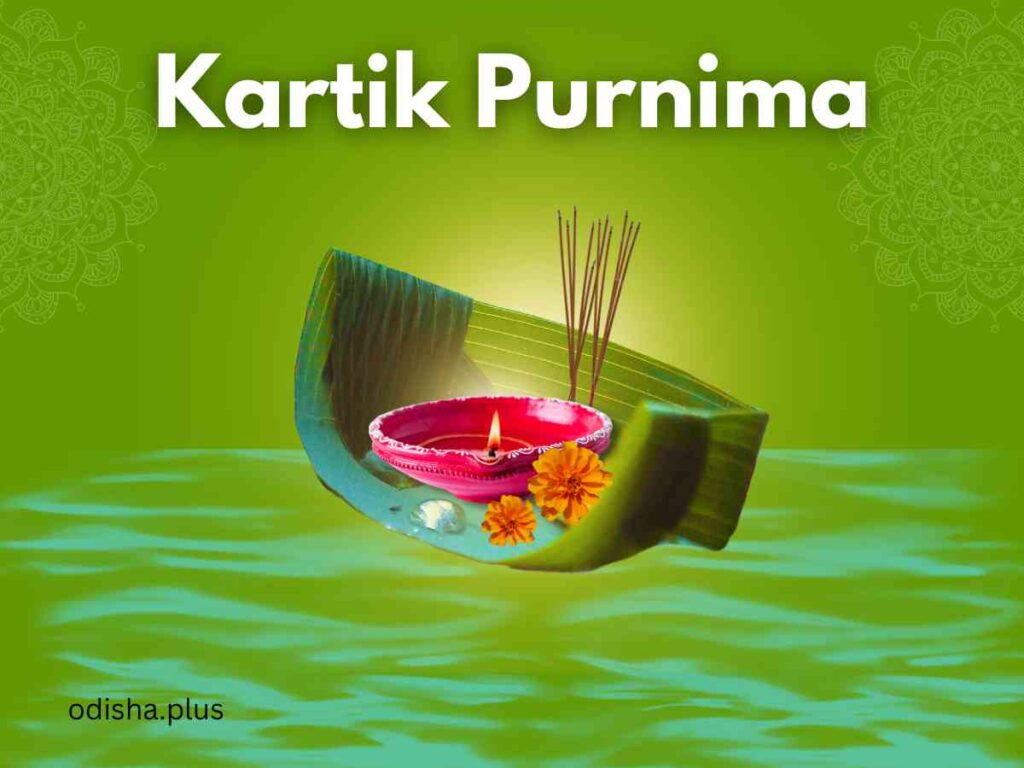History depicts Kalinga (modern day Odisha) as an independent, indomitable Republic of the time
Sambeet Dash

Kartika Purnima, the last full moon day of Fall (Autumn). This special day has a historic significance for the state of Odisha where it is celebrated to commemorate its rich heritage. In the Western hemisphere, it is called the Beaver Moon shining bright on a cool, crispy, crystal clear, aquamarine Fall sky.
Once upon a time, Odisha used to be an independent state and a maritime superpower. It’s ‘Sadhavas’ (traders) use to go on trading expeditions to faraway lands of Java, Sumatra, Borneo (modern day Indonesia and Malayan Peninsula), bringing in riches and laurels. This full moon day with high tide and the advent of winter with calm seas assisted by favourable trade winds was considered apt and auspicious to launch any commercial mission.
Many on this day in my home state back home of Odisha flock in droves early in the morning to the nearest river, lake or pond to revisit the past. They float miniature yachts with lamps, slowly pushing them into water. Propelled by rippled waves they waver a few feet with the lamps flickering before getting submerged – probably a metaphorical symbol of the waning and faltering state.
For years my father has been telling me that there was invariably a huge line in front of the pond near our house to float the flotillas associated with this festival. Each year, the line gets longer. The reason – most water bodies inside Bhubaneswar either have dried up, or gobbled up by land sharks who topped them with soil to form the bottom base of the ever-expanding concrete jungle. This year too there seems to be no respite, but the same pond is drying fast with its rapidly receding water level. It won’t be long before the pond ends up as a dry crater.
Kalinga War
History depicts Kalinga (modern day Odisha) as an independent, indomitable Republic of the time – rich and robust enough to challenge and resist the powerful Magadha Kingdom for several generations. Kalinga’s marauding War Elephants, an integral part of the military those days was regarded as the best in Indian subcontinent.
In Hindi tele serial on Chanakya, when Magadh’s princess, daughter of Emperor Mahapadmananda is kidnapped. Mad in rage, he suspected Kalinga –‘Ek Kalinga Hai Jo Magadh Rajkanya Ka Apaharan Ka Sahas Sakta Hai’ (only Kalinga could dare to kidnap Magadh Emperor’s daughter). Kalinga was powerful enough to earn the respect of its powerful neighbor Magadh who envied its power to live in peaceful coexistence.
After him both Chandragupta and his son Bindusara of Maurya Dynasty spectacularly failed to conquer Kalinga. It is said that Chanakya, Chandragupta Maurya’s prudent minister advised his King to refrain from attacking Kalinga, a powerful adversary of the day. The wise minister was only following his famous Chanakya Neeti (treatise) – “If your adversary is powerful, it’s wise to make truce with it”. His words supposedly dissuaded the Magadh Emperor already tired from his protracted battle against the last Nanda King from any kind of misadventure against Kalinga. His son Bindusara wisely followed his father by maintaining the status quo by continuing the truce.
But his scion, ambitious ‘Chandashok’ (Ashok, the cruel), attacked Kalinga and finally won a pyrrhic victory in the year 261 BC. The citizens of Kalinga fought bravely till the end. The Daya river near the Dhauli hills on the outskirts of the modern-day Bhubaneswar turned into red with the blood spilled in that devastating war. Ashok was stunned when he saw the women and kids of Kalinga stubbornly fighting, refusing to surrender till they fell one after another.
The war was bloody enough to transform ‘Chandashok’ (Ashok, the cruel) into ‘Dharmashok’ (Ashok, the Pious). Couple of centuries later it was payback time for Kalinga. ‘Kharabela’, the emperor of Kalinga avenged the earlier defeat by conquering and ransacking Magadh.
Gajapati Kings
From 11th to 15th century AD, the Gajapati (Lord of Elephants, probably because of Kalinga’s famed Pachyderm army was its forte) Kings of Odisha built embarkments on rivers, created impressive architectural feats like the Sun Temple of Konark (Black Pagoda), defended aggression from enemies and built a great civilization. At one point of time the Kalinga empire extended from Ganges in North to Godavari in the south under King Kapilendra Dev.
The mighty King maintained both Queens and Concubines who kept on delivering broods of legitimate and illegitimate progenies, laying the seeds for future fratricidal wars. His descendants got involved themselves in internecine squabbling to capture the throne and managed to be the harbinger of the demise of the great Kalinga empire. Raja Mukund Dev was arguably the last independent Odia King before it came under Muslim rule, followed by the Marathas and British.
A scene from the Hindi movie ‘Ashoka’ still rings a bell. When Prince Ashok, played by the popular actor Shah Rukh Khan arrives in Kalinga (modern day Odisha), he is offered food by a native who says “Kalinga Mein Koi Bhukha Nahi Rahta” (nobody goes hungry in Odisha).
More than couple of thousands of years after Ashok it sounds irony by itself. Poverty and malnutrition keep Odisha in the news cycle as the state lags behind in Human Development Indices. In Odia there is a saying – ‘Karpura Udi Jaichi, Khali Kana Padichi’, meaning the smell of camphor is gone, only the cloth remains. Gone are those glorious days with only golden memories down the lane to cherish.
Feasting Fasting
The day after Kartik Purnima is called ‘Chhadakhai’ (Feast after the Fast), when the Odias make trip to the local fish, meat market. They do it to break the logjam of their month-long absence from non-vegetarian food of fish, meat and poultry they cherish. This hiatus can be an entire month for the few devoted ones or just 5 days (Panchuka) of absence from the titillating foods at the far end for most.
The prices of fish and meat skyrocket as the vendors often try to seize advantage of the demand. It’s not uncommon for street vendors being beaten for selling substandard fish and meat. I remember reading in a local newspaper sometime in the 1990s, public thrashing of a guy accused of selling dog meat in guise of goat meat. This day also marks the beginning of the winter months, a very pleasant season which last for couple of months.
Happy Kartik Purnima to all!
(The author is an Odia technocrat living in the USA. Views expressed are personal)
#odisha #kartik-purnima #chhadakhai #kartik-masa #art-and-culture #tradition



























